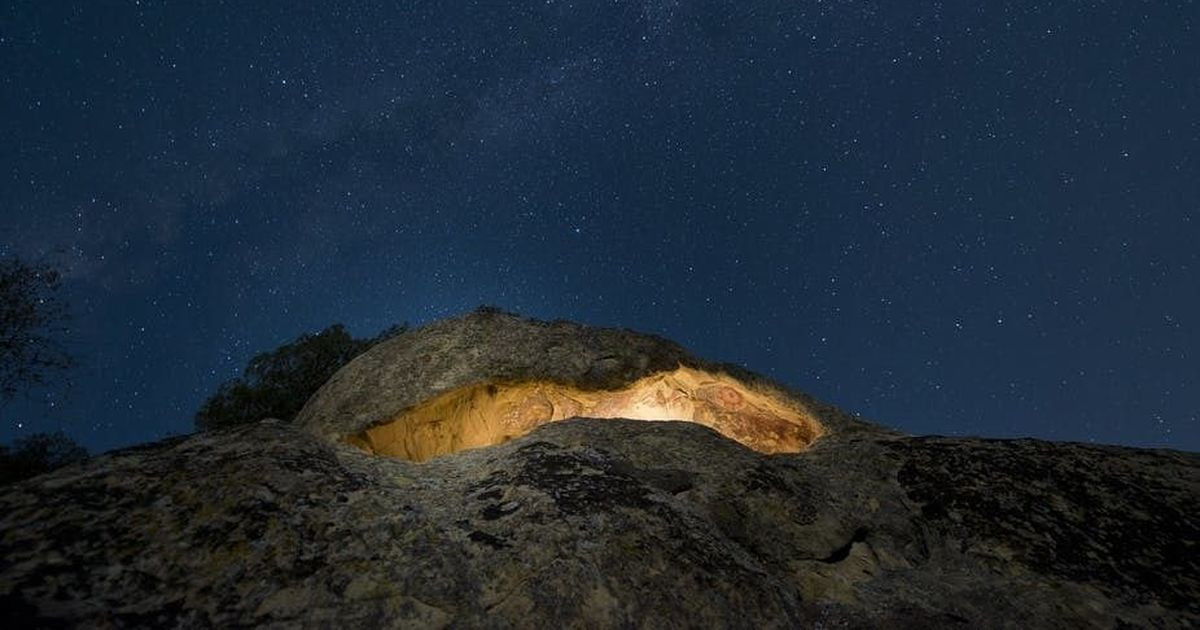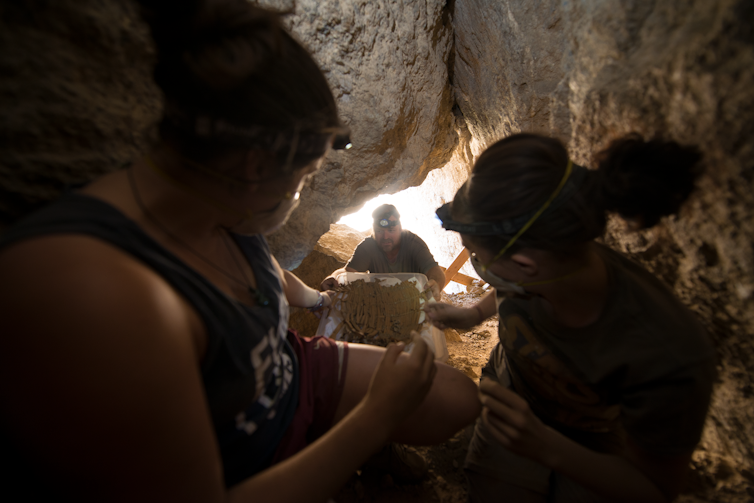
We often associate virtual reality with thrilling experiences we may never be able to have in real life – such as flying a jet fighter, exploring the oceans or going on a spacewalk. But researchers are also starting to use this technology to study and open up access to archaeological sites that are difficult to get to.
An archaeological site can be inaccessible for a range of reasons. It might be in a remote location or on private property, the archaeological remains may be fragile, or it might just be difficult or dangerous to get there.
Just over an hour’s drive north from Los Angeles is the Wind Wolves Preserve. At nearly 100,000 acres, the preserve protects a wide range of endangered and threatened species in the heart of the most populous state in the US.
It also hosts two remote archaeological sites situated in the San Emigdio Hills. Pleito, one of the most elaborately painted rock-art sites in the world, and Cache Cave, with one of the most significant in-situ collections of perishable objects, including baskets, ever discovered in the American West. The oldest of the rock paintings and baskets appear to be over 2,000-years-old. However, exploring it is problematic. The paintings at Pleito, found on exfoliating sandstone, are extremely fragile. Meanwhile, the Cache Cave is a complex, narrow cave system.

Yet these sites are of great cultural importance to local Native Americans, especially the Tejon Indian Tribe. The hands of some of their ancestors painted the rock art, while other highly skilled basket makers worked for hours on making some of the world’s finest basketry. Until recently, the majority of the Tejon tribes people were unable to visit the Pleito cave site due to its inaccessibility and fragility.
Now our team of researchers from the University of Central Lancashire in the UK has created a VR model of the sites. We did this by taking images with a digital camera and performing laser scanning of the site. Using “reality capture” techniques like photogrammetry – which helps make measurements from photographs – we could then develop a VR prototype.
We tested the prototype at the offices of the Wind Wolves Preserve and the Tejon tribe, respectively, in the summer of 2017. The response was profound, with younger tribal members responding particularly well in an environment similar to “gaming”. Equally, the simulation proved effective for use by the elder members of the tribe, some of whom have mobility issues visiting the preserve and its rugged terrain.
We also tested the software at the actual site of Pleito with the Tejon Indians. Two tribal members who could not make the climb to the cave instead used the VR headset on flat ground nearby. This allowed them to experience the environment and to “be” in the landscape while still exploring the paintings. This, as far as we are aware, was the first time Native Americans have used VR in the field to reconnect with their own past.
The research provides an innovative platform for tribal members to engage with sites and practices no longer in living memory as a form of cultural restoration. Importantly, it also provides an effective way to engage young tribal members within ancestral spaces and practices.
As well as opening access to remote archaeological sites, we are now able to construct what we term an “enhanced reality” experience. Cutting edge archaeological image processing techniques such as DStretch and Reflective Transformation Imaging can be used to overlay digitally enhanced textures directly over the cave geometry. This allows people to view details of the site that are difficult to see with the naked eye.

For example, research investigating pigment recipes used within the different layers of painting on the site helped us to display the separation of the layers on the cave. It also enabled us to show the site as it would have looked through different points in time.
This really shows how VR simulations of archaeological sites can offer unique ways to experience, engage and explore scientific data.
As a visualisation tool, new opportunities are now arising to use immersive technologies like VR to conduct research. Innovative work at the Allosphere – a facility at the University of California, Santa Barbara, which helps make visual representations of data – has enabled researchers to analyse multiple data sets in ways not previously possible.
In our work in California, we are investigating how to use VR to help field research by using immersive reconstructions of previous season’s excavations to aid in new ones as we dig deeper within the cave deposits. That way, we can actually see previous layers that we have removed and better contextualise the new layers we are exposing.
The technology can also be of great use in teaching. We are sharing the models of the Californian sites with our archaeology and anthropology students, offering unique and novel opportunity to explore the rock art, handle and inspect the baskets and even use native technologies such as the bow and arrow.
VR technologies are starting to open up remote access to other sites around the world too. From the British Museums documentation of African rock art sites to the Scan Pyramids Project opening access to the iconic monuments of Giza, to an immersive interaction with Nikola Tesla and his laboratory, the application of immersive technologies are proliferating across the globe.
The most creative of these projects include scientific information to make them more than simple replications – enhanced learning environments where scientific knowledge can inform the public about the past. Excitingly, this offers entirely new ways to learn from old sites, without damaging them.
Brendan Cassidy, Senior Lecturer in Computer Science, University of Central Lancashire and David Robinson, Reader in Archaeology, University of Central Lancashire.
This article first appeared on The Conversation.